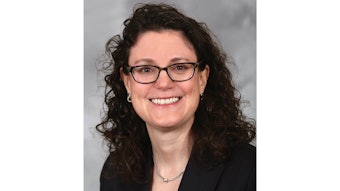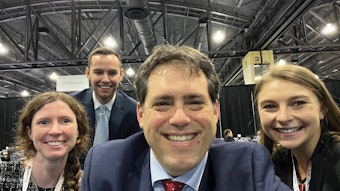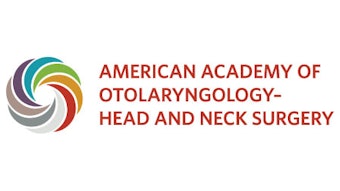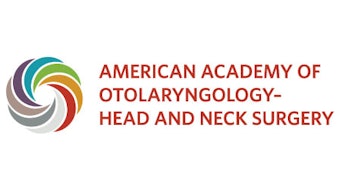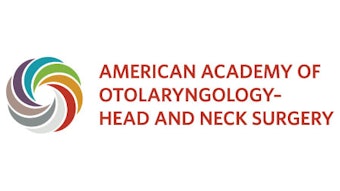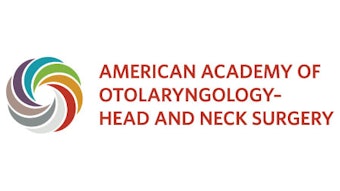OUT OF COMMITTEE: Hearing | Gene Therapy Whisper Toward a Hearing Future
The field of restorative treatments for hearing loss is currently silent, at least at the surface.
Ronna Hertzano, MD, PhD, Kevin T. Booth, PhD, and Rick F. Nelson, MD, PhD

Hearing is a complex and highly integrated biological process. Consequently, the development of efficacious molecular therapies has long been stymied by an incomplete mechanistic understanding of hearing loss and by lagging technological advancements. Since the human genome was published in 2001, critical advancements in many fields (genetics, genomics, transcriptomics, genome editing, developmental biology, auditory neurosciences, and virology) have accelerated the opportunities for auditory biologists to develop nonhuman preclinical models of hearing loss for the process of developing therapeutics. As 50% of the cases of congenital SNHL are genetic, research has focused on gene therapy as a leading approach.
For a gene therapy approach to be successful, the treatment target must be known and well characterized. Accordingly, the auditory field has expended significant effort to identify deafness-associated genes, classify and catalog the effects of variants in these genes, understand their mechanistic roles in the hearing process, create clinical genetic testing protocols, and screen individuals with hearing loss. Due to its increasing utility in clinical care and decreasing cost, genetic testing has become a primary approach to understand congenital SNHL. The continued identification and classification of genetic variants through genetic testing will equip healthcare providers with additional prognostic tools, such as the predictive modelling of a patient’s hearing loss progression, that may significantly impact treatment decisions and quality of life outcomes.
The fuller understanding of hearing loss genetics also provides a list of target genes, disease mechanisms, and pathways—for which to develop new molecular therapies. To propel the field beyond prognostic tools and into the realm of curative treatments, scientists have started developing inner ear delivery and intervention approaches to overcome the technical challenges presented by the relatively inaccessible location of the cochlea. On both fronts, there has been a lot of success. With respect to inner ear delivery, adeno-associated viruses (AAVs) have become a popular and suitable option for packaging inner ear therapeutics. These non-genome integrating viruses are easily manipulated and modified and can produce large quantities of viral particles. Furthermore, AAVs have been proven as safe delivery vehicles in other organ systems and for the treatment of diseases in human patients, such as spinal muscular atrophy and Duchenne muscular dystrophy. In anticipation of their eventual utilization in the treatment of hearing loss, surgical approaches have been developed to deliver the therapeutic virus into the cochlea via the round window membrane, stapes footplate, or semicircular canals. In fact, a recent U.S. Food and Drug Administration (FDA)-approved clinical trial for gene delivery of ATOH1 in humans has shown that infusion of recombinant adenovirus 5 (Ad5) through a hole in the stapes footplate in profoundly deaf patients is a seemingly safe approach for delivering therapeutics in the inner ear. However, current results have not demonstrated an improvement in hearing in these patients.
Although success for hearing restoration in human patients has not yet been achieved using viral gene delivery, gene replacement approaches for recessive causes of hearing loss in mouse models have resulted in significant phenotypic rescue (e.g., OTOF, Vglut3, Clrn1, Tmc1, and Slc26a4, to name a few). The successful application of gene therapy in mice, to treat hearing loss that is caused by mutations in OTOF, is primarily due to the preservation of cochlear hair cells in the absence of OTOF. In humans, OTOF-related hearing loss causes auditory synaptopathy (also referred to auditory neuropathy syndrome disorder). According to the preclinical models, correcting OTOF-related hearing loss only requires reestablishing the synaptic activity of inner hair cells’ synaptic activity in a cochleae where normal function and cytoarchitecture is otherwise preserved. Additionally, more recently, examples of CRISPR-Cas9 base editing to target the genomes of the cells in the cochlea have started to emerge. For genes associated with dominant hearing loss (Gjb2, Kcnq4, and Tmc1), allele knockdown and genome editing using CRISPR-Cas9 base editing have both been shown to be effective approaches in mice.
Although the field has advanced considerably with respect to developing gene therapy approaches to treat hearing loss, several hurdles remain. First, in preclinical models where gene therapy successfully restored hearing in mice, the therapeutic was delivered prior to the loss of the hair cells. However, we know from modeling different forms of hearing loss in mice that hair cell death and general loss of the sensory epithelium, a phenomenon also referred to as a flat epithelium is a final common pathway for hearing loss caused by mutations in many genes. In cases of hearing loss caused by hair cell loss, the current gene therapy approaches described above will not suffice. Overcoming the flat epithelium obstacle requires dissection of the intricate and nuanced gene regulatory networks that direct cell identity in order to drive hair cell and support cell regeneration. Early work examining how chicken and zebrafish regenerate hair cells, a feat mammals cannot accomplish, opened the door to manipulating gene regulatory networks in the inner ear of the mouse to regenerate hair cell–like cells. While there is still work to be done, significant strides have been made in mammalian hair cell regeneration in the past several years. The advancements in understanding and overcoming the barriers to hair cell regeneration in adult tissues will likely allow cell replacement in the future and broaden the applicability of gene therapy approaches.
Second, a known genetic cause of hearing loss is a requisite for precision medicine. To date, researchers have discovered over 110 genes carrying variants that cause congenital and postlingual onset hearing loss with more likely to be elucidated. As such, there is a need for widespread genetic testing both for further gene discovery and to generate comprehensive patient registries to facilitate the identification of candidates for treatment. Incorporating genetic testing into the newborn screening program could help narrow this knowledge gap. While presbycusis or age-related hearing loss (ARHL) is multifactorial, genetics likely plays a role that has yet to be fully identified. In contrast, patients who experience postlingual hearing loss as young adults are another important group that would benefit from genetic testing, specifically those patients who are hybrid cochlear implant candidates.
Third, gene delivery to the inner ear remains a technical challenge. The complexity and integration of the hearing process indicates minor biological aberrations, like the overexpression or misexpression of some gene products into the wrong cell types, or the correct cell types at the wrong time, may have deleterious effects on hearing. While the field exerts some control over which cell types are targeted by using different AAVs, additional technical refinment is required to fine-tune therapeutic expression levels that will result in the rescue of biological function without causing toxicity. This issue is not cochlear-specific. Other fields have addressed this challenge by including and modifying gene regulatory elements to modulate gene expression, target the correct cells, and adjust therapeutic dosing.
Fourth, it might not be possible to intervene with gene therapy in some cell types and for some genes. Other forms of hearing loss that result from mutations in genes that underlie inner ear development (e.g., mutations in genes expressed in mesenchymal cells that later turn into bone) may not be amenable to treatment in mature tissues. As another example, mutations in genes that result in cell degeneration will require gene replacement and cell regeneration. However, perhaps the most significant obstacle the field must first overcome to bring gene therapies from bench to bedside is the difference in the developmental maturity of the newborn mouse and human ears. Many studies demonstrate successful hearing restoration using gene delivery and hair cell regeneration in newborn mice. However, with few exceptions, most of these studies fail to produce similar results in mice that are 7 days old or older. The time point in mice cochlear development where most gene therapy and hair cell regeneration studies have been successful—shortly after birth—is equivalent to the cochlear developmental stage in the first trimester of human fetal development. From a diagnostic, therapeutic, and ethical standpoint, this time point for treatment would be challenging.
Given the tremendous progress the field has shown in the past two decades and because many remaining technological challenges are shared with other medical fields, it is reasonable to expect many of these obstacles will be overcome within the foreseeable future. Collaborative efforts between the FDA, academic clinician-scientists, and the growing number of biotechnology companies looking to impact the hearing loss field will hopefully accelerate the initiation of new clinical trials. Notably, because of the success in rescuing hearing in some forms of monogenic deafness in animal models, insurance companies have begun to change their policies on coverage for genetic testing for hearing loss. These changes are likely to mobilize the field to build large registries of patients with hearing loss and their underlying mutations as a basis for enabling precision medicine in the future. Additionally, work in nonhuman primates will likely broaden as the field works toward expanding genetic targets and providing the necessary proof-of-concept for successful hearing restoration using gene therapy. Indeed, clinical trials for hearing loss caused by genes successfully targeted in adult mice are likely to begin. While these trials will apply to only select groups of patients representing less than 1% of individuals with hearing loss, as the challenges outlined above are silenced, these whispers will pave the way for treating more prevalent forms of hearing loss.
Acknowledgment: We thank Benjamin Z. Shuster for critical review and edits of this article.
References
Al-Moyed H, Cepeda AP, Jung S, Moser T, Kügler S, Reisinger E. A dual-AAV approach restores fast exocytosis and partially rescues auditory function in deaf otoferlin knock-out mice. EMBO Mol Med. 2019;11(1):e9396. doi:10.15252/emmm.201809396
Askew C, Chien WW. Adeno-associated virus gene replacement for recessive inner ear dysfunction: progress and challenges. Hear Res. 2020;394:107947. doi:10.1016/j.heares.2020.107947
ATOH1 Clinical Trial. https://clinicaltrials.gov/ct2/show/NCT02132130
Azaiez H, Booth KT, Ephraim SS, et al. Genomic landscape and mutational signatures of deafness-associated genes. Am J Hum Genetics. 2018;103(4):484-497. doi:10.1016/j.ajhg.2018.08.006
Chien WW. A CRISPR way to restore hearing. N Engl J Med. 2018;378(13):1255-1256. doi:10.1056/NEJMcibr1716789.
Delmaghani S, El-Amraoui A. Inner ear gene therapies take off: current promises and future challenges. J Clin Med. 2020;9(7):2309. doi:10.3390/jcm9072309
Eckert MA, Harris KC, Lang H, et al. Translational and interdisciplinary insights into presbyacusis: a multidimensional disease. Hear Res. 2021;402:108109. doi:10.1016/j.heares.2020.108109
Gao X, Tao Y, Lamas V, Huang M, et al. Treatment of autosomal dominant hearing loss by in vivo delivery of genome editing agents. Nat. 2018;553(7687):217-221. doi:10.1038/nature25164
György B, Nist-Lund C, Pan B, et al. Allele-specific gene editing prevents deafness in a model of dominant progressive hearing loss. Nat Med. 2019;25(7):1123-1130. doi:10.1038/s41591-019-0500-9
Lee MP, Waldhaus J. In vitro and in vivo models: what have we learnt about inner ear regeneration and treatment for hearing loss? Mol Cell Neurosci. 2022;120:103736. doi:10.1016/j.mcn.2022.103736
Maguire CA, Corey DP. Viral vectors for gene delivery to the inner ear. Hear Res. 2020;394:107927. doi:10.1016/j.heares.2020.107927
Omichi R, Shibata SB, Morton CC, Smith RJH. Gene therapy for hearing loss. Hum Mol Genet. 2019;28(R1): R65-R79. doi:10.1093/hmg/ddz129
Orvis J, Gottfried B, Kancherla J, et al. gEAR: Gene Expression Analysis Resource portal for community-driven, multi-omic data exploration. Nat Methods. 2021;18:843-844. doi:1038/s41592-021-01200-9 (2021)
Romano DR, Hashino E, Nelson RF (2022). Deafness-in-a-dish: modeling hereditary deafness with inner ear organoids. Hum Genet. 2022;14(3-4):347-362. doi:10.1007/s00439-021-02325-9

